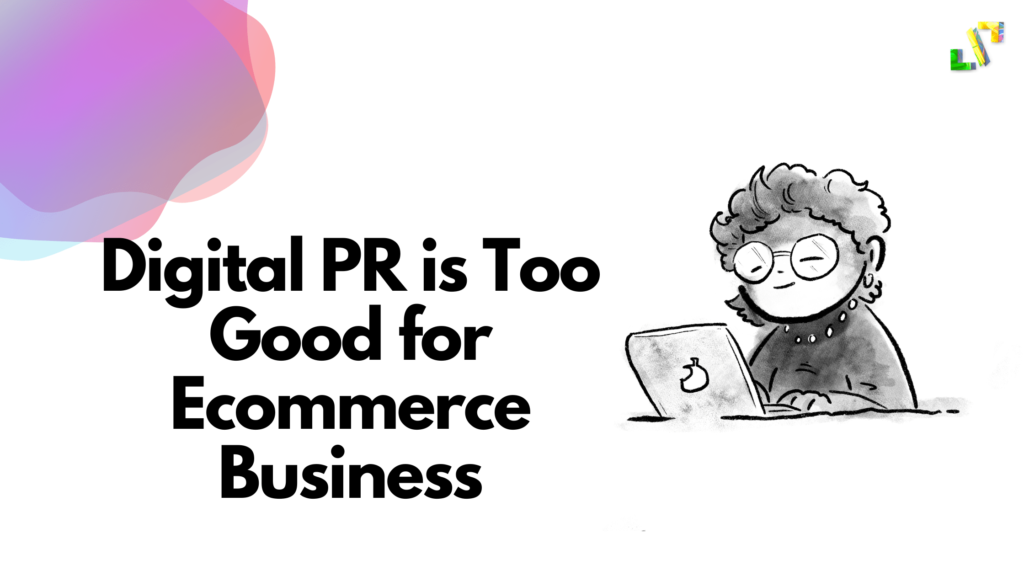Business-to-business (B2B) marketing can be a complex and ever-evolving field. To ensure success, it is essential to be aware of potential red flag strategies when it comes to demand generation. In this blog post, we will discuss 7 Red Flag of Demand Generation Strategy and how they can be the ultimate success factor for B2B marketing. Keep reading to learn more about how to identify and prevent these strategies from damaging your business.
What is demand generation?
Demand generation is a term used to describe the process of creating and nurturing demand for a product or service. It involves engaging potential customers with relevant content and creating relationships with them, in order to convert them into paying customers. Demand generation is essential for business B2B marketing, as it helps create awareness and interest among potential customers and leads to increased sales.
Red flag strategies can be used to identify and address any potential issues with demand generation, which could ultimately be the success factor for business B2B marketing. Red flags may include not nurturing leads, not having a lead capture form on your website, not having a lead magnet, not having an email list, not segmenting leads, not following up with leads and not tracking results. Identifying and addressing these red flags can help ensure that businesses are able to maximize their return on investment in demand generation activities.
What are the Red Flag of Demand Generation Strategy?
Red flags in demand generation refer to strategies and tactics that do not provide the success factor for business B2B marketing. These strategies often involve failing to nurture leads, track results, or use a lead capture form on their website. Other red flags include not having an email list or segmenting leads, or failing to follow up with them.
All of these practices can be detrimental to the success of a demand generation campaign and should be avoided. By avoiding these red flags and following successful strategies, businesses can better ensure the success of their business B2B marketing campaigns.

Awareness
Brand awareness is an inevitable part for any brand to generate demand across their business journey

Visibility
Being more visible to the target audience is the a key factor that accelerate demand.
7 Red Flag of Demand Generation Strategy
1) Not nurturing your leads
When businesses fail to properly nurture their leads, they fail to build relationships and create lasting connections. Nurturing your leads is essential for success in business B2B marketing. It’s one of the most important success factors when it comes to demand generation.
Nurturing your leads allows you to stay top-of-mind and continue to provide value to potential customers. It also provides an opportunity for you to better understand their needs and tailor content and offers accordingly.
This includes providing educational resources, webinars, case studies, emails, and more that all focus on the needs of your prospects. Nurturing your leads will help you create stronger relationships and move more prospects through your sales pipeline.
Solution:
Make sure to put a strategy in place to consistently nurture your leads. Utilizing customer relationship management (CRM) tools can help manage customer data and automate tasks like sending targeted emails or personalized messages.
You should also invest in technologies such as automated lead scoring, which can track and measure customer engagement with your content and offers so that you know who is ready to buy from you and who may need more nurturing.
Additionally, setting up lead nurturing campaigns with regular communication helps to establish brand trust and loyalty with prospective customers over time. By leveraging technology, creating personalization campaigns, and focusing on customer engagement, companies can use demand generation red flag strategies to ensure success in their business B2B marketing efforts.
2) Not having a lead capture form on your website
Not having this crucial element on your website can lead to lost opportunities for growing your business. Without a lead capture form, you won’t have the ability to collect contact information and begin a dialogue with prospective customers.
Having a lead capture form is essential in order to build a targeted email list. This will allow you to reach out to potential customers who have already shown interest in what you have to offer.
This data can then be used for segmenting your leads and creating customized messages to better engage each segment of your target audience. Additionally, it is important to track your results, allowing you to measure the success of your campaigns and adjust accordingly.
Solution
To solve this, you need to start by creating an enticing offer and placing it on your website in the form of a lead capture form. Your offer should include something that adds value to your target audience and encourages them to enter their information.
This could be a discount code, ebook, whitepaper or another resource that gives them more information about your product or service. To ensure success, make sure your lead capture form is optimized for mobile devices, easy to understand and prominently displayed on your website. Doing so will help you create more opportunities for leads to come in.
Additionally, it’s important to use marketing automation tools to capture user information, segment leads and track conversions. With these tools in place, you’ll have the ability to track performance and measure the effectiveness of your lead capture strategy. By leveraging these techniques, you can overcome one of the most common red flags in demand generation – not having a lead capture form on your website.
Catapult Brand Demand with Strategic Content Marketing
Having a content-first approach helps you to create the authority in the sector and generate demand for your brand.
Contact Our Content Manager Now3) Not having a lead magnet
One of the most important demand generation red flag strategies that can be a major success factor for business B2B marketing is not having a lead magnet. A lead magnet is an incentive such as a piece of content, tool, or product trial that you offer in exchange for a visitor’s contact information. Without a lead magnet, you are missing out on an opportunity to capture and engage potential customers.
Lead magnets create a sense of urgency for the user to provide their contact information. This can result in higher conversions and ultimately more leads. The key is to make sure the lead magnet is compelling enough for people to want to share their information. For example, if you are offering a free ebook, make sure it provides helpful information that users find valuable.
Solution
Having a lead magnet is one of the most important demand generation red flag strategies and an essential success factor for business B2B marketing. A lead magnet is an incentive to entice potential customers to give you their contact information.
A good lead magnet could be an eBook, a webinar, or a free trial of your product. To create an effective lead magnet, make sure it’s relevant to the target audience and addresses a specific problem they have.
Additionally, make sure your lead magnet is visible on all your marketing channels so that potential customers know about it. Finally, make sure to follow up with those who have shown interest in your lead magnet, as this can be a great way to start building relationships with them.
4) Sales Process Takes Too Long
One of the biggest red flags for demand generation in business B2B marketing is a slow sales process. When leads take too long to close, it’s often an indicator that something isn’t quite right. The longer it takes to convert a lead, the higher the chance of them losing interest or going to your competition. To ensure success in your demand generation efforts, it’s essential to streamline your sales process and make sure that you can quickly move customers from inquiry to purchase.
Solution
To do this, you need to create efficient workflows that allow you to move leads through the sales cycle efficiently. This means having automated processes for follow-ups, timely responses to inquiries, and streamlining the paperwork associated with closing deals.
Additionally, providing your sales team with the right resources and training can help speed up the process. With the right tools and resources, they can close deals more quickly while still providing an exceptional customer experience.
By streamlining your sales process and ensuring that leads are converted quickly, you can maximize success in your demand generation strategies. This will help you take advantage of the success factor of B2B marketing and increase conversions.
You can also ensure success by tracking key performance indicators (KPIs) such as leads generated, closed deals, and ROI. These metrics will help you identify potential issues in your demand generation campaigns early on so you can address them quickly and prevent them from becoming a major problem.
Additionally, using data from past campaigns can give you valuable insight into which demand generation red flags might be affecting your success rate.
5) Spending Too Much Time Updating Your CRM
Keeping your customer data accurate and up-to-date is essential for successful B2B marketing. However, manually updating customer data in your CRM can be time-consuming and may even lead to mistakes. In order to make sure your CRM is updated quickly and accurately, you should consider automating certain processes, such as contact information, lead scoring, and more. By automating these processes, you will be able to save time and have a much more accurate view of your leads.
Solution
This can significantly eat up your marketing team’s time, reducing their ability to focus on more important tasks. To get around this, you need to automate as much of the CRM data entry process as possible.
This can be achieved by integrating your lead capture form on your website with your CRM system, so that all relevant customer information is automatically entered into the CRM. You can also automate other processes such as lead scoring, nurturing and tracking customer engagement.
Automation will help you to quickly identify qualified leads and reduce the amount of time spent on manual data entry, allowing you to focus on generating more leads for your business and ultimately increasing your success factor for business B2B marketing.
6) Chasing Unqualified Leads
Chasing unqualified leads is a common red flag in demand generation for business B2B marketing, and one that can be a significant source of frustration for sales teams. Unqualified leads are those who do not fit the criteria or requirements of your ideal customer. Not only does this waste valuable time and resources, but it also means you are likely to miss out on more qualified prospects.
To avoid this red flag strategy, it is important to identify key criteria for your ideal customer profile before beginning your demand generation efforts.
Solution
Chasing unqualified leads is a major red flag for demand generation, as it can be a major waste of time and resources. To avoid this, create lead scoring criteria that allows you to quickly identify which leads are most likely to convert into customers.
This will help you focus your attention on those leads with the highest potential for success. Additionally, you can use lead segmentation to tailor messages and campaigns to specific audiences, ensuring that only the most relevant and qualified leads are reached.
By implementing these strategies, you can maximize your chances of success in business B2B marketing and boost your demand generation success factor.
7) Not having an integrated approach
Having an integrated approach to demand generation is essential for any successful business. If you don’t have an integrated approach, then you are probably missing out on opportunities that could be generating more leads and customers for your business.
An integrated approach to demand generation focuses on using multiple channels and tactics together to generate qualified leads. It involves having a well-defined and structured process of prospecting, nurturing, converting, and retaining customers.
This includes leveraging online and offline tactics such as content marketing, social media, email, search engine optimization (SEO), pay-per-click (PPC) campaigns, print advertising, direct mail campaigns, trade shows, and events.
Solution
By having an integrated approach, you are able to reach your target audience in multiple ways. You can also measure the effectiveness of each tactic and channel to see what works and what doesn’t. This can help you optimize your strategies and maximize your ROI.
Not having an integrated approach can lead to missed opportunities and lower conversion rates. You may find yourself trying too many different strategies with no clear direction, making it difficult to track the performance of each one.
Without being able to identify what is working and what isn’t, it is difficult to make informed decisions about how to optimize your demand generation strategy.
To get the most out of your demand generation efforts, it is important to have a comprehensive and integrated approach.
You should define your target audience, set goals, develop a plan of action, allocate resources, track progress, measure results, and make necessary adjustments as needed. With an integrated approach, you will be able to maximize your ROI and generate more qualified leads for your business.
Conclusion
The most successful demand generation campaigns are based on a comprehensive and integrated approach. By understanding the various warning signs associated with demand generation and by taking the necessary steps to address any issues that may arise, organizations can ensure their campaigns are as successful as possible.
By avoiding these seven red flag strategies, organizations can ensure that their demand generation campaigns are optimized for maximum ROI and that their marketing goals are met. Additionally, utilizing a well-rounded approach will ensure that potential customers have the best experience possible when engaging with your brand.
At the end of the day, successful demand generation comes down to having a well-planned and properly executed strategy. With a combination of the right technology, people, processes and tactics in place, businesses can optimize their campaigns and maximize their success.
Reviewed By
SOJY is a Growth Marketing Strategist with proven expertise in Marketing Psychology, Performance marketing and SEO with over 7 years of experience in the industry. With a passion for helping businesses grow, he has a track record of success in developing and executing innovative marketing strategies that drive growth and ROI.
-
Sojy SNhttps://blog.algorithmc.com/author/sojy/
-
Sojy SNhttps://blog.algorithmc.com/author/sojy/
-
Sojy SNhttps://blog.algorithmc.com/author/sojy/
-
Sojy SNhttps://blog.algorithmc.com/author/sojy/




